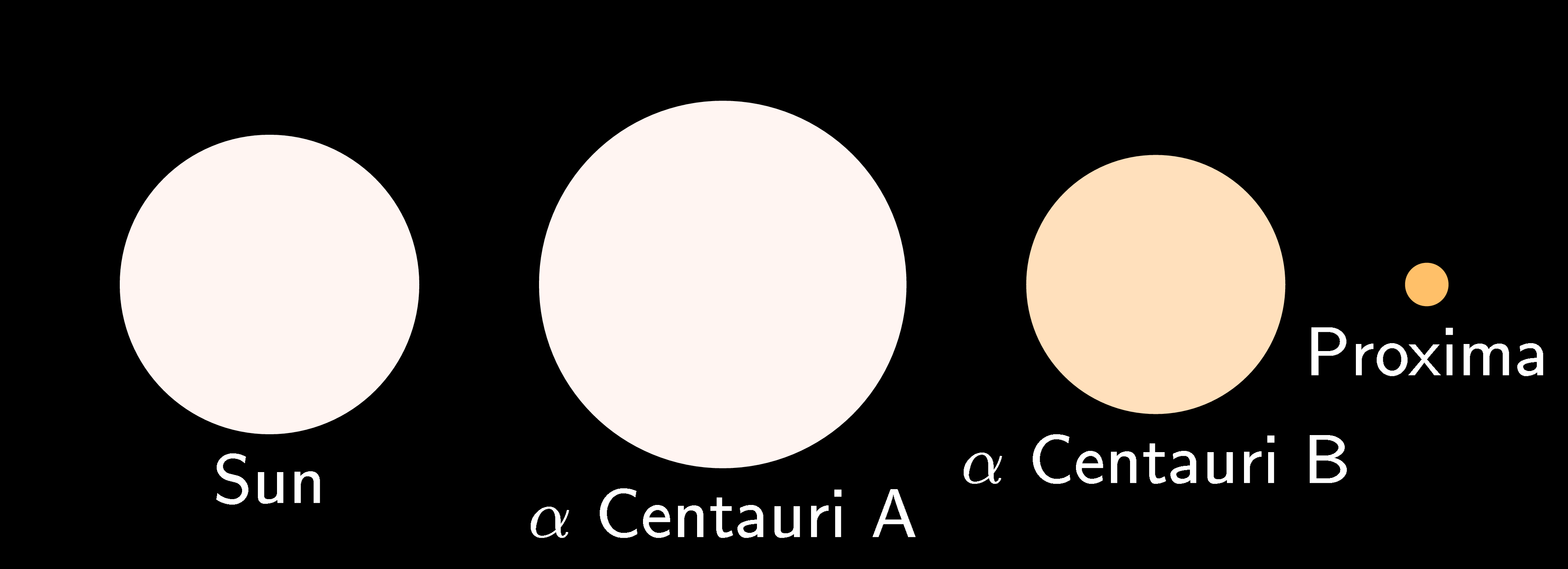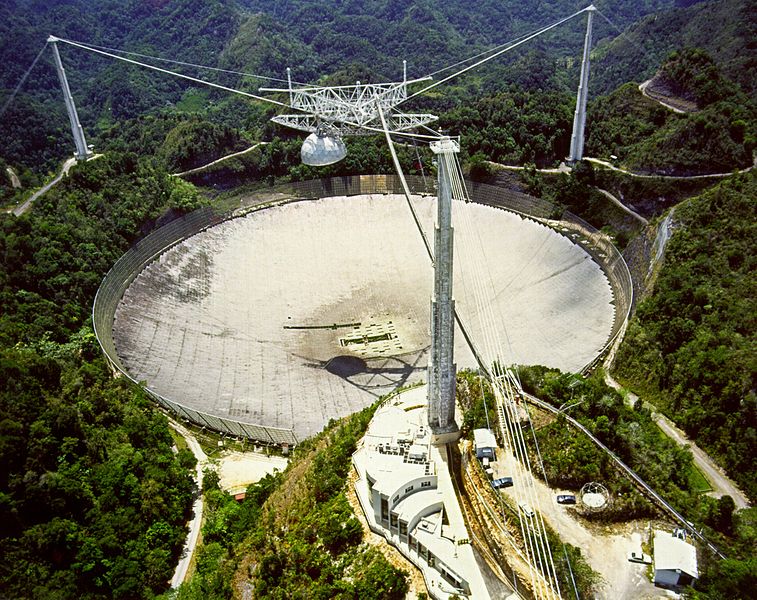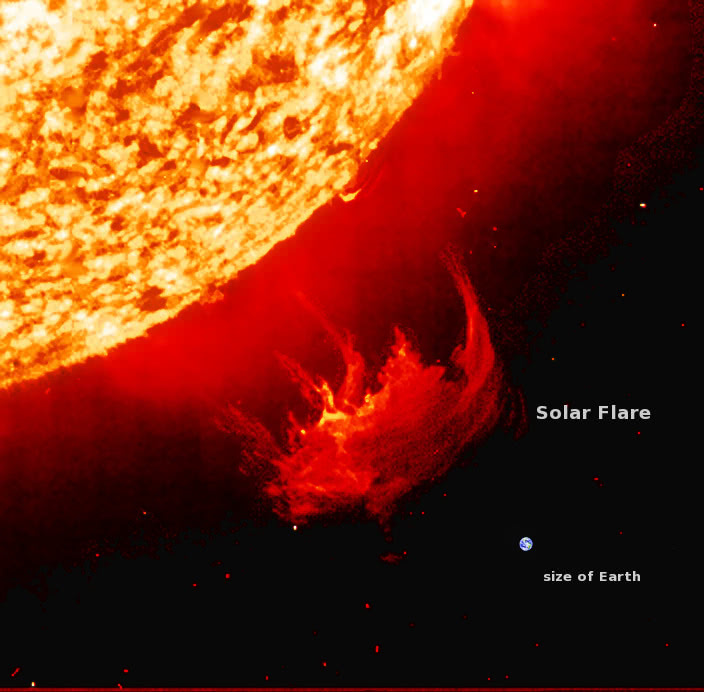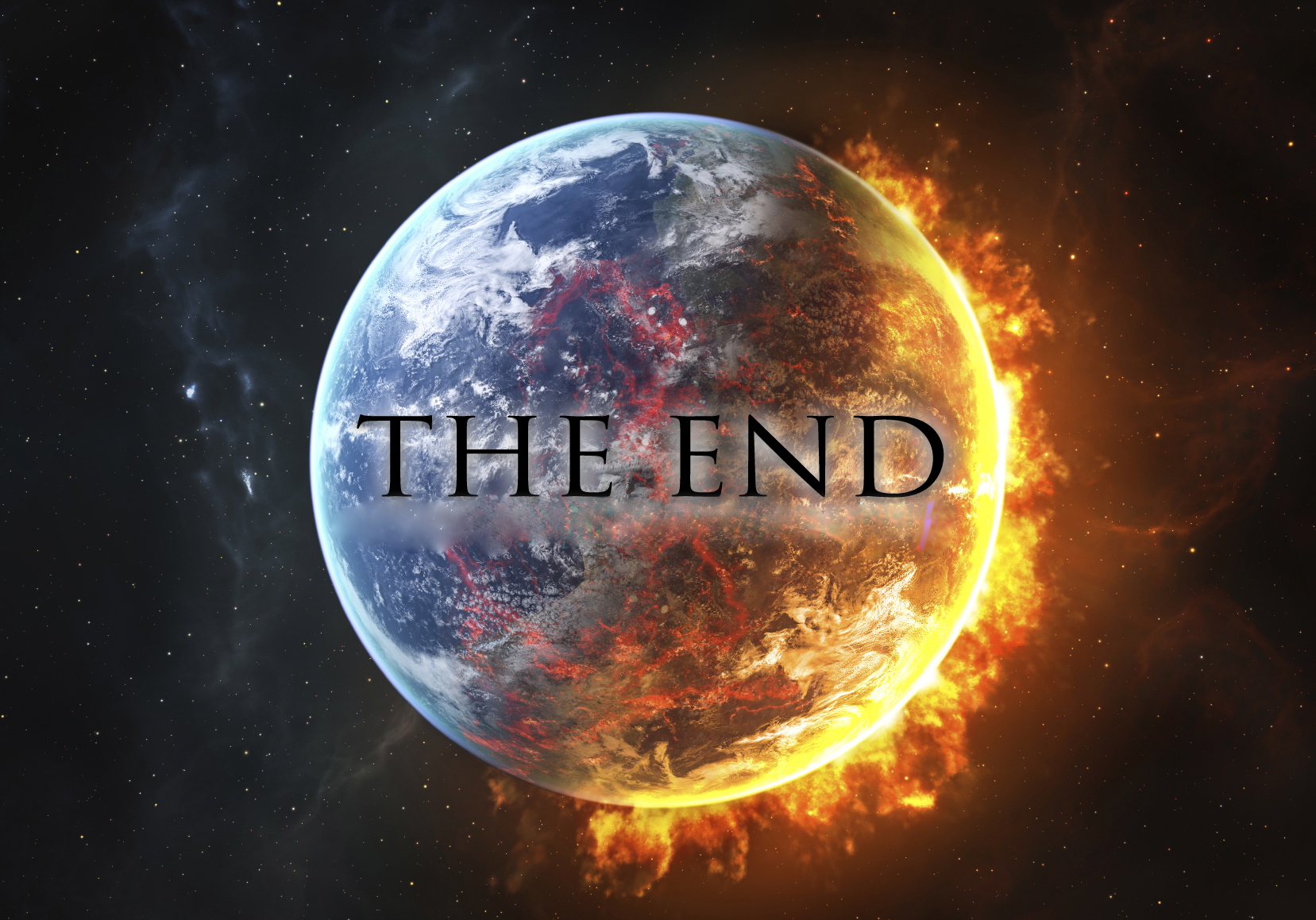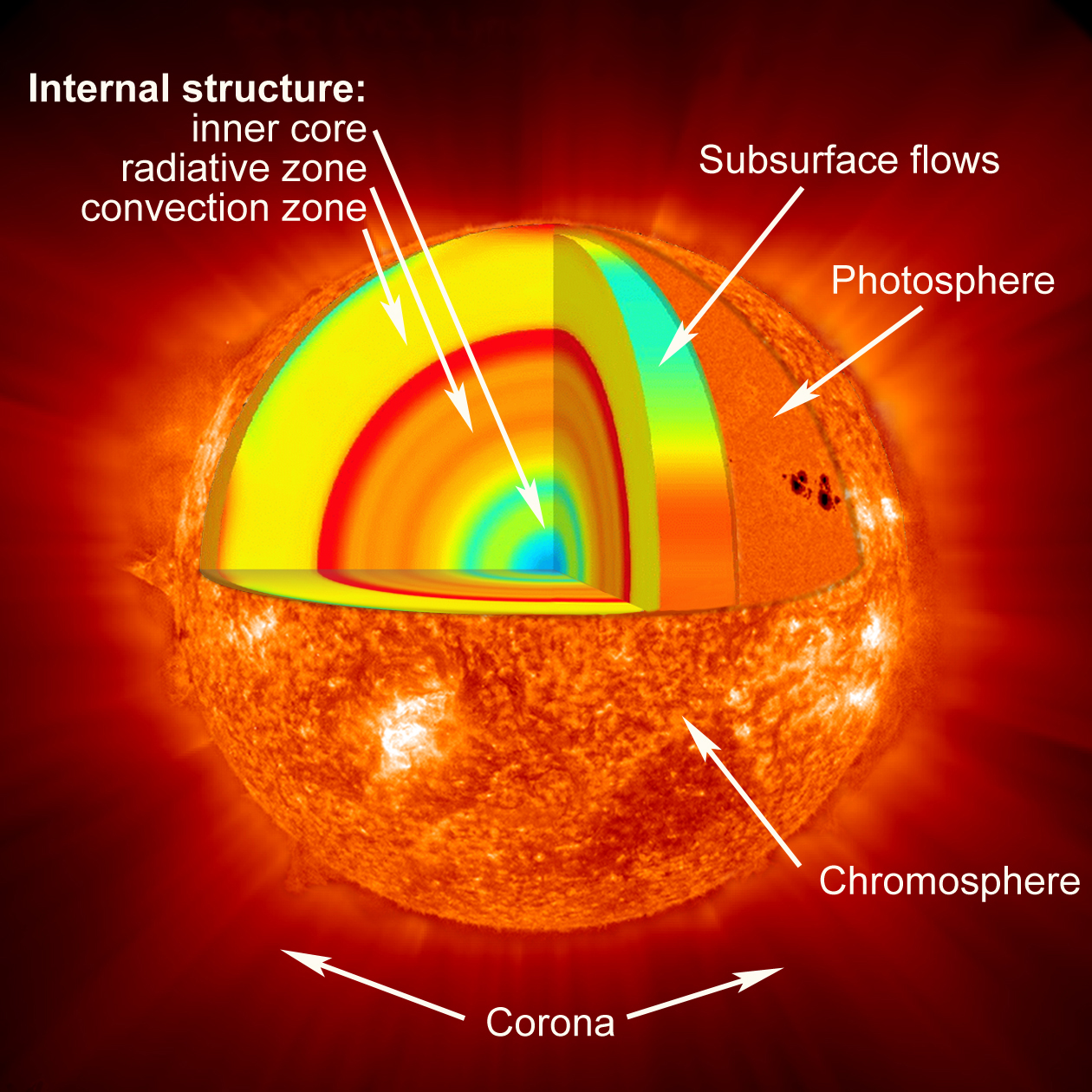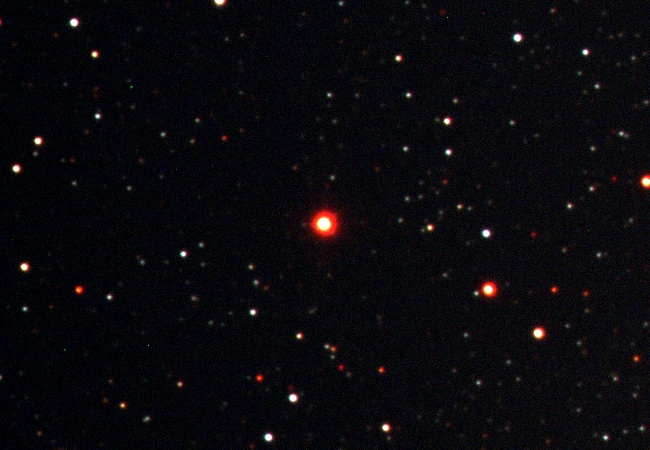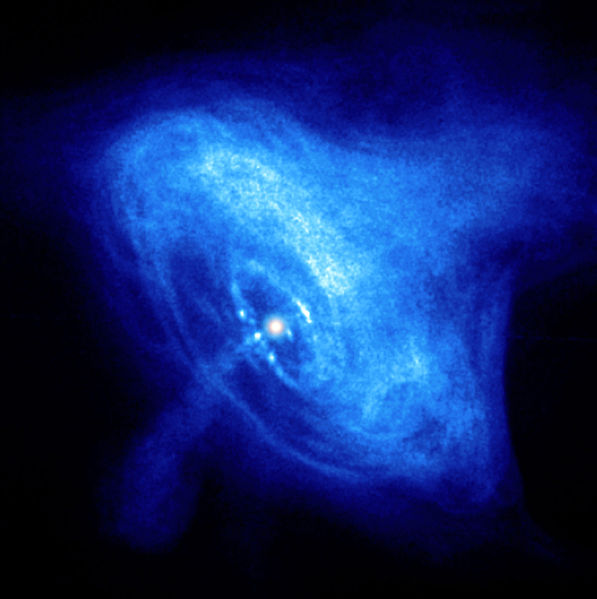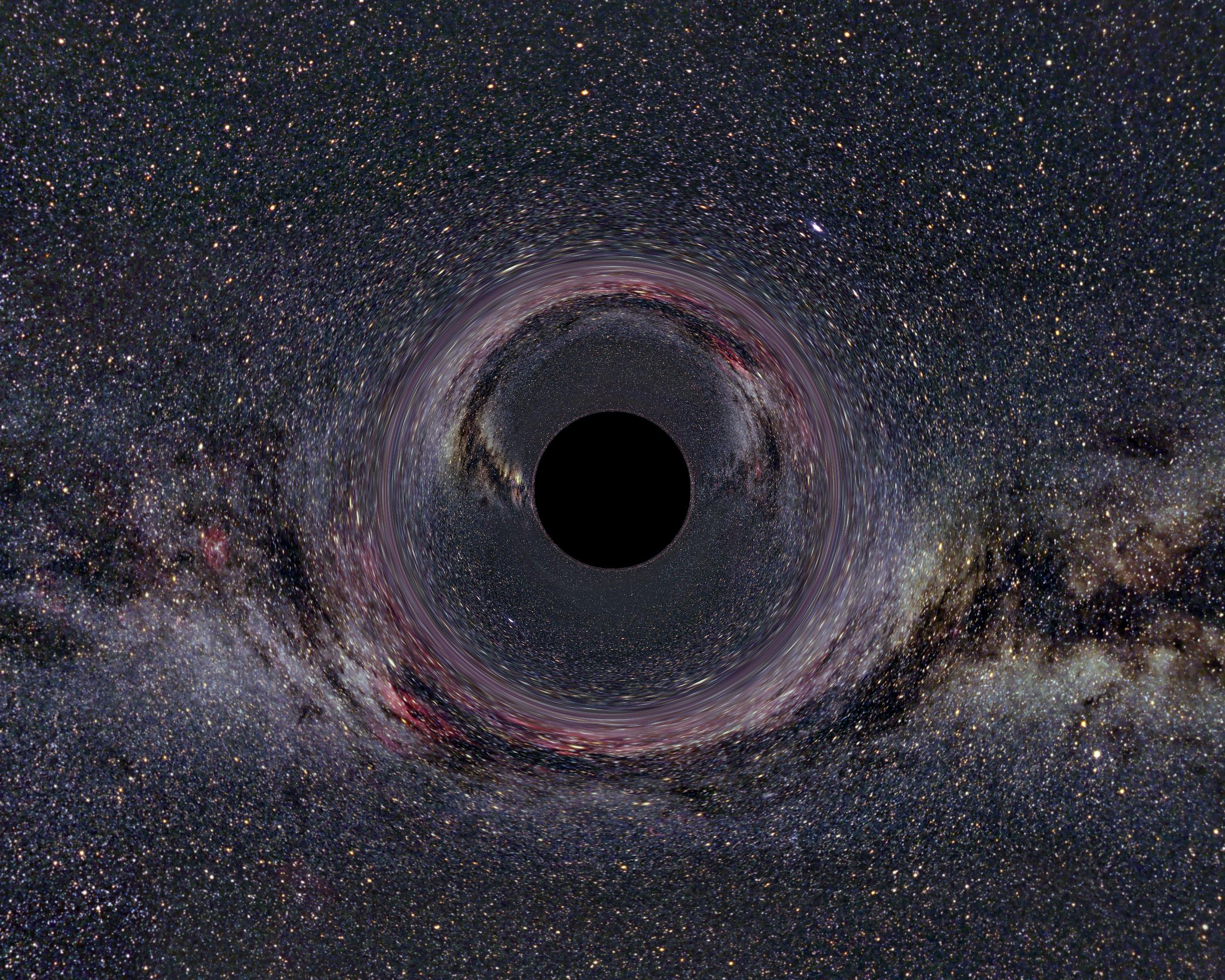"Death comes to all, but great achievements build a monument which shall endure until the sun grows cold." - Ralph Waldo Emerson
Our closest threat is the Sun. Life on Earth is completely dependent on the Sun. It feeds us, keeps us warm, and tucks us in to a safe place in the galaxy. Life would be much harder to maintain if we were closer to or further from it. The Sun is a massive 1,969,000,000,000,000,000,000,000,000,000 kilogram ball of 70% hydrogen 28% helium that is 1,390,000 kilometers across. Its core is 15,600,000 Kelvin and its surface is 5,800 Kelvin. Basically, its a humongous sphere of fire, plasma, and radiation. Nuclear fusion in its core produces its 386 billion billion mega Watts by converting about 700,000,000 tons of hydrogen to about 695,000,000 tons of helium and 5,000,000 tons of energy (gamma rays) - every second! The fragile balance of the Earth-Sun orbit combined with the extreme energy of the Sun makes the Sun a pretty laudable force that can turn against life on Earth.
The Sun is huge. It contains more than 99.8% of the total mass in our solar system. Jupiter contains most of the rest. Its easy to see that the Sun emits light and heat, but it also emits a low density stream of electrons and protons in what is known as the solar wind. This wind spreads out in our solar system at about 450 kilometers per second. Data collected from the spacecraft Ulysses has shown that the solar winds can be up to 750 kilometers per second. The solar wind creates the large tails on comets and can generate measurable effects on the trajectories of spacecraft. Additional information about the solar winds will be gathered by the recently launched Wind, Ace, and SOHO spacecraft which will be positioned 1.6 million kilometers from the Earth towards the Sun. The Sun is also know to eject high energy particles in what are called solar flares. Both the solar wind and solar flares can greatly affect Earth; they can cause radio interference, aurora, and even power line surges.
At 4.5 billion years of age, the Sun has already used up about half of the hydrogen in its core. The other half of its hydrogen supply will allow it to radiate for another 5 billion or so years, but as ages it will gain luminosity and become approximately twice as bright by the end of its hydrogen supply. When the Sun has fused all of its hydrogen it will radically change, and possible completely destroy Earth, but nevertheless create a planetary nebula where new planets can be born.
Before we look at what this adversary can do to us, lets look at what it really is and what it can do. The sun is one of more than 100 billion stars in our galaxy. Here's a really cool video done by the Discovery Channel that describes the life cycle of stars from birth to death:
Twinkle Twinkle BOOM
http://www.youtube.com/watch?v=4s7vyDLgk3M
To summarize it all up:
Nebulae (interstellar clouds made up of dust, hydrogen, helium and other ionized gases) are the procreators of stars. These gargantuan clouds eventually collapse under their own gravitational forces and form protostars. The protostars continue to collapse and become main sequence stars. As the star ages it fuses its hydrogen into helium and helium into heavier elements. Eventually the core runs out of hydrogen and later helium. This cause the core to contract and the outer layers to expand and cool making the star less bright. At this stage the star becomes a red giant or even a super red giant if it had enough initial mass. It then collapses a final time and explodes, becoming either a black dwarf (a white dwarf that has cooled and no longer emits large amounts of heat or light), neutron star, or black hole.
In more detail:
Nebula - gas and dust clouds in the cosmos. They are where stars are born and are composed of the very matter that makes the stars. There are multiple types of nebula. The Orion nebula is an emission nebula the shines overhead come winter due to the gas in it being energized by stars that have already been created within it.
In a reflection nebula light from stars is reflected of the grains of dust within the nebula. The Pleiades Cluster is an awesome example of a reflection nebula.
Dark nebula, like the Horsehead Nebula in orion, are denser clouds that can absorb a fraction or all of the light emission from behind them.
A planetary nebula consists of the outer layers that a star sheds when is changes from a red giant to a white dwarf. Here is an image of the Helix Planetary Nebula
Stars - luminescent sphere of gas that produces its heat and light by nuclear fusion. Stars are composed of mainly hydrogen and helium gas. They can have surface temperatures from 2000 K to hotter than 30,000 K. Their colors correspond to their surface temperature and range from red to a blue-white.
The most luminescent stars can emit as much light as a million Suns and have masses 100 times greater than the Sun. These stars have short lives and live for less than a million years until the die a glorious death and supernova. On the other hand, the dimmest of stars are red dwarfs; the Sun is a thousand times more bright than them. While the smallest possible mass of a star is 8% that of the sun, it is still about 8000% the mass of the biggest planet in our solar system, Jupiter. At any small of a mass, the gravitational forces wont be enough to entice nuclear reactions. Celestial bodies with masses less than this critical mass are dim and deemed either brown dwarfs or large planets.
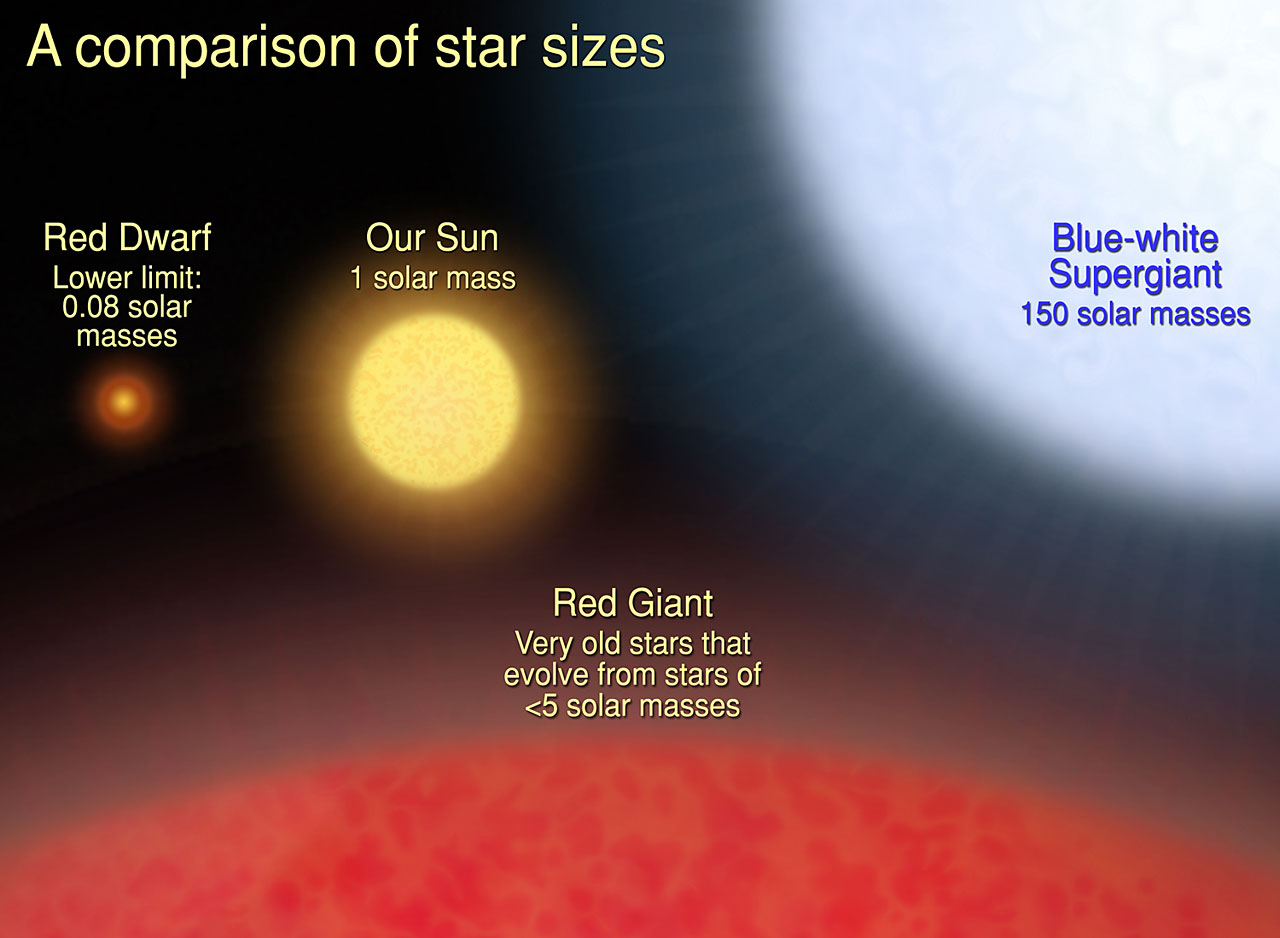
Red Giant - large bright and cool (cold) star. These form later in the life of a Sun like star when it has exhausted its hydrogen. They usually have diameters 10 to 100 times larger than the Sun's. Their luminosity comes from their huge size. Very large red giants are called super giants and they have diameters up to 1000 times that of the Sun with luminosities 1 million times greater than the Sun's. Check out Mira in Cetus the Whale
Red Dwarf - small, cold, and faint stars. They are about 10% both the mass and diameter of the Sun. These burn their fuel very slowly and live about 100 billion years. Check out Proxima Centauri
White Dwarf - small, hot star. A white dwarf is a Sun like star in the last stage of its life cycle. They weigh about the same as the Sun but have only 1% of its diameter. Thats about the size of Earth. This gives it an insane density. A spoonful of a white dwarf would weigh several tons. On their surface they are about 8000 K and only have a luminosity of about a percent of the Sun's. Essentially a white dwarf is the shrunken remains of what it used to be. They have no more nuclear energy and live out the rest of their lives as degenerate matter as it cools and fades over billions of years. Here is a picture of the first one ever found. It lies in the triple star system 40 Eridani
Supernova - explosive euthanasia of a star. Supernovas lead to the star reaching a brightness of about 100 million Suns for a brief period. They are the main source of elements heavier than hydrogen and helium since they produce enough heat and energy to fuse them.
A type one supernova will take place in binary star systems where the gas will be expelled from one star as it is sucked onto a white dwarf. This causes the white dwarf to explode.
A type two supernova takes place in star that are ten times the mass of the Sun. These stars experience runaway internal nuclear reactions that lead to explosions. This type of supernova leaves behind either a neutron star or a black hole.
Neutron Stars - stars made of neutrons. When a supernova explodes it forces protons and electrons to combine and form a neutron star. These are very dense stars. Neutron stars that spin very rapidly create the blinking effect of a pulsar.
Neutron stars typically have a mass three times that of the Sun but only a 20 kilometer diameter. Any greater of a mass will generate a gravitational force so great that a black hole is formed.
Black Holes - form from massive stars. Black holes have a gravitational pull so great that not even light can escape it. They are so powerful that they distort the space continuum around them. When active, black holes sick in stars and even galaxies around them. There is a black hole at the center of most galaxies, including our Milky Way, and a supermassive black hole at the center of the universe. Here is an image of a black hole distorting the light from behind it
Here's a cool video on the ways a star can die:
Exploding Stars:
RIP
http://www.youtube.com/watch?v=qfRiqwQBegQ&list=PL6667B34B30CADD6D
Here is a link to a video that will prepare you for the next blog post about the dangers posed by solar flares and coronal mass ejections. The video is a NOVA special on the Sun called "Secrets of the Sun". Its 52 minutes of information about the Sun's behavior and how it works. NOVA looks at current research on the Sun including the launch of the Solar Dynamics Observatory which will give us uninterrupted coverage and high-resolution observation of the Sun. It also includes a really interesting portion on what we can learn from the sounds that the Sun produces.
Hot Tamale
www.youtube.com/watch?v=wisdfag6WIQ
"Unimpeded, the trip from the core to the surface would take the photons a matter of seconds. In reality, the sunlight that shines on us today may have been created during the last ice age. Energy reaching the sun's surface doesn't just result in sunlight. It can also trigger solar storms."- Watch it and find out how

